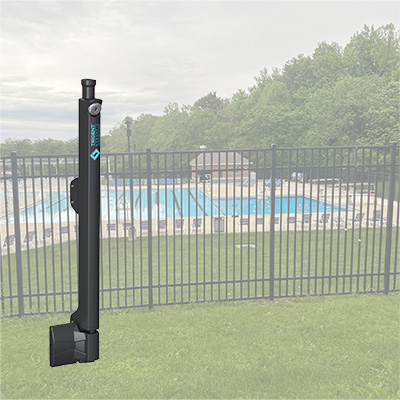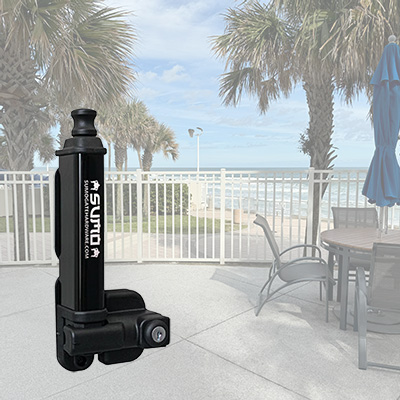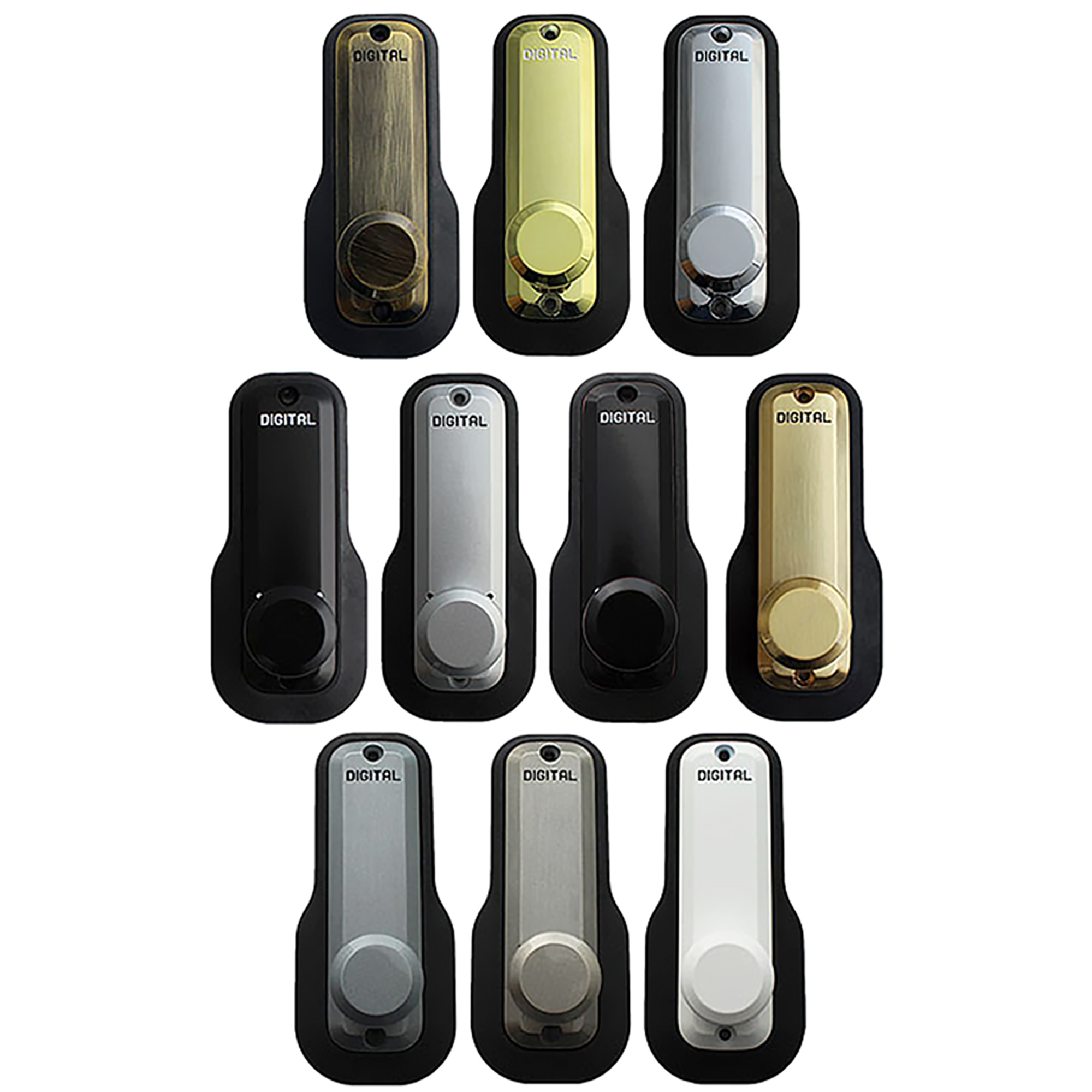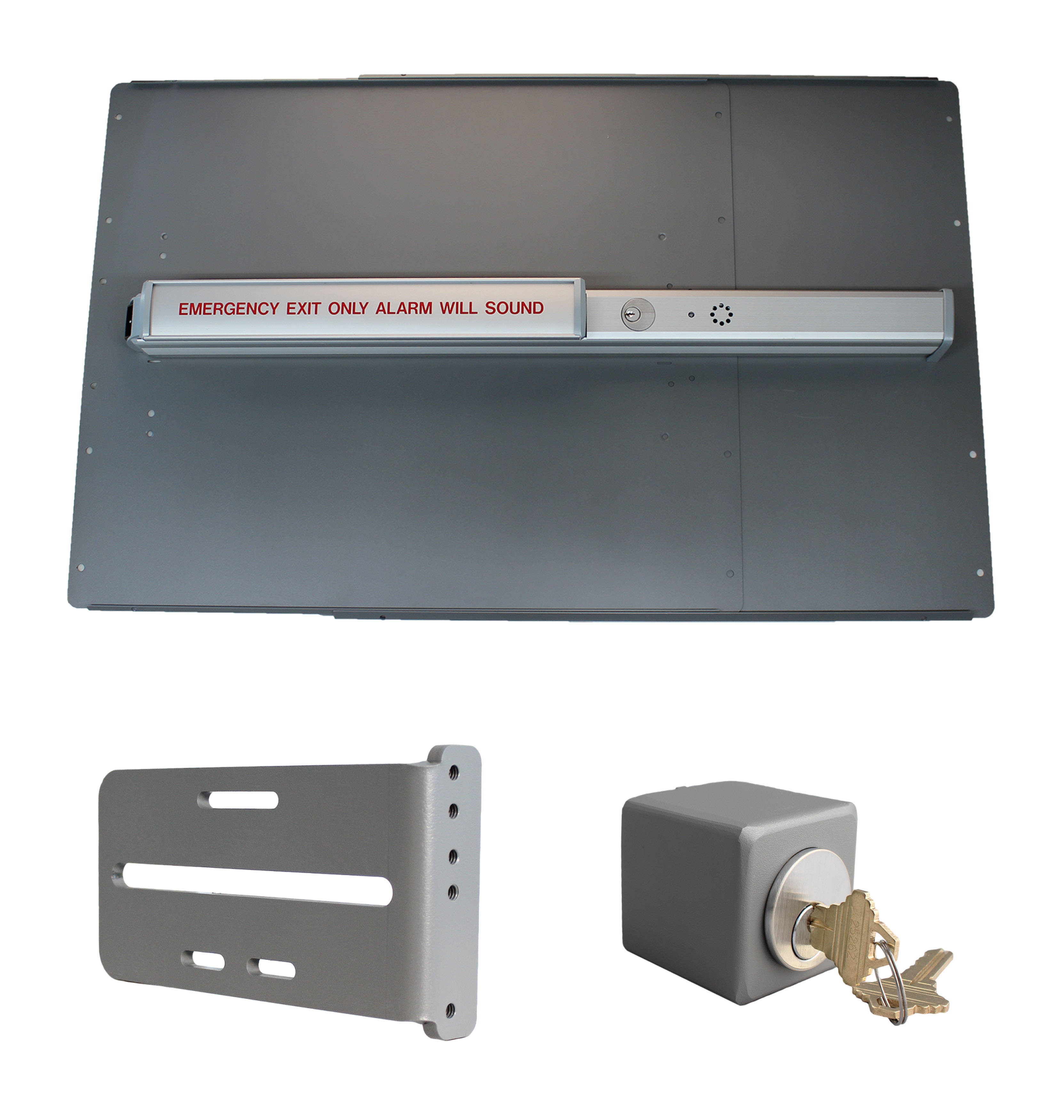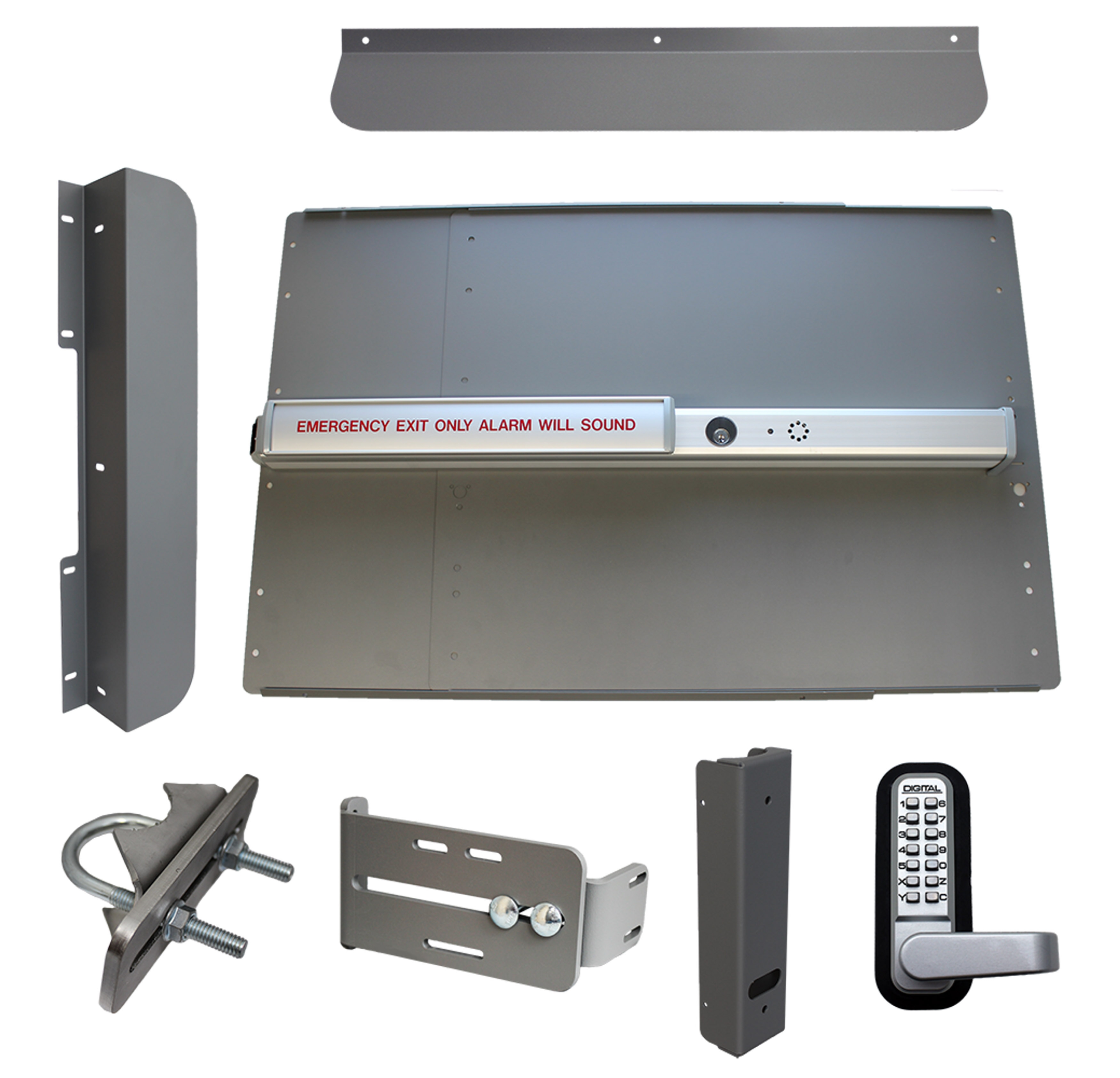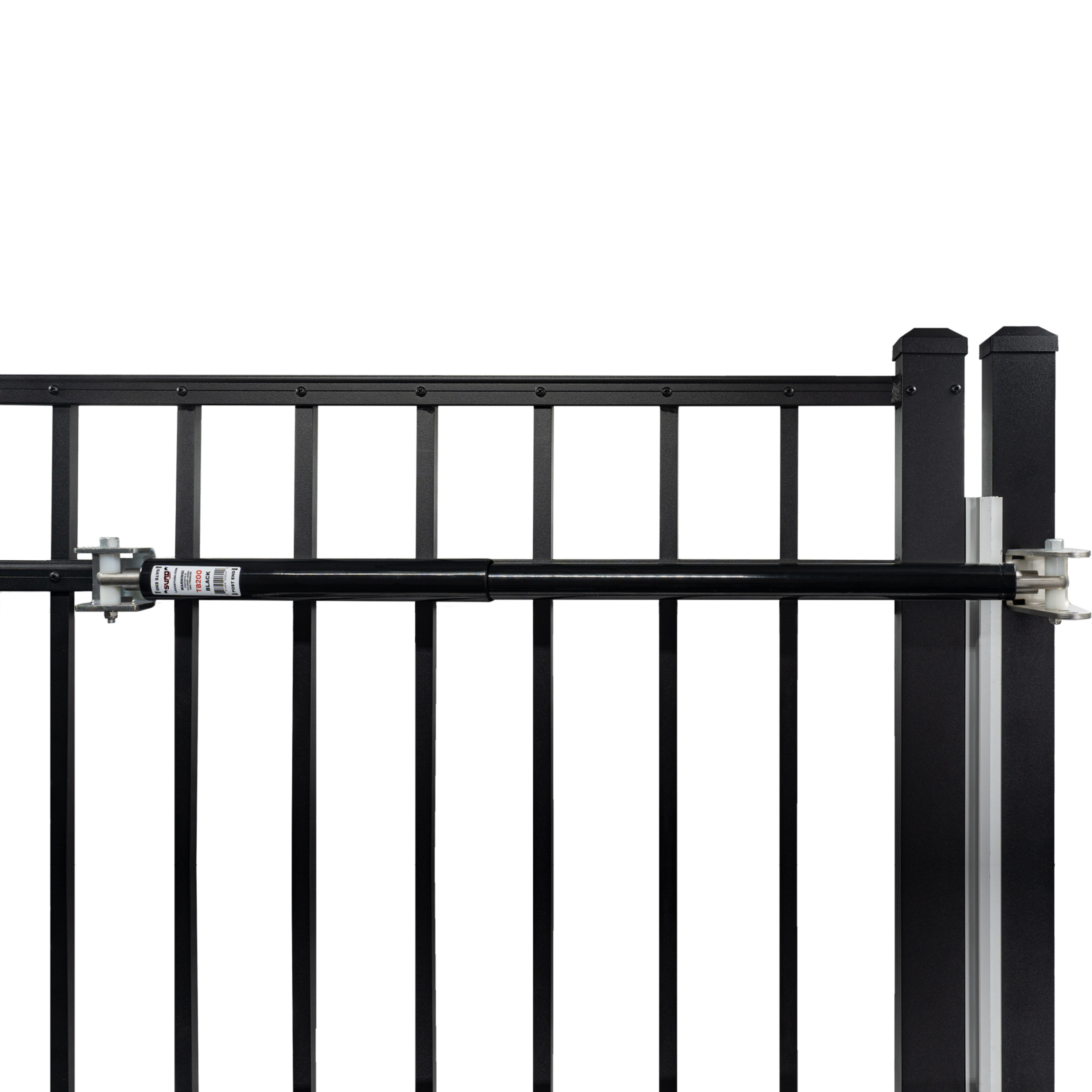How to Secure Pool Gates with Nationwide Industries Code-Compliant Latches
When it comes to pool safety, the gate is your first line of defense. A properly secured pool gate doesn't just mark the perimeter of your pool; it plays a critical role in protecting children, pets, and even unsuspecting guests from accidental entry. According to the Centers for Disease Control and Prevention (CDC), drowning remains the leading cause of injury-related death for children ages 1 to 4 in the United States. Tragically, many of these incidents occur in home swimming pools. That's why local, state, and national building codes mandate the use of self-closing and self-latching gates, along with hardware specifically designed to prevent unauthorized or unsupervised access.
Selecting the right gate hardware, especially a pool safety gate latch and a self-closing pool hinge, is essential to creating a secure, code-compliant barrier. These components are not just convenient add-ons; they are required by building codes, such as the International Swimming Pool and Spa Code (ISPSC), the BOCA National Building Code, and local ordinances. Failure to meet these standards can result in fines, delayed pool permits, or, in extreme cases, life-threatening accidents. In this guide, we'll walk you through the core safety requirements and explain how to choose code-compliant gate hardware that'll help keep your pool safe and accessible only when it should be.

Why Pool Gate Security Is So Important
- Child Safety: Young children can silently wander into pool areas if gates are left unlatched or open. A properly designed gate and latch system reduces the risk of accidental drowning.
- Legal Compliance: Most municipalities require self-closing and self-latching mechanisms on all residential and commercial pool gates. Local inspectors enforce compliance during construction and routine property inspections.
- Liability Protection: If someone is injured in your pool area due to insufficient security, you may be held legally liable. Code-compliant hardware demonstrates due diligence and can protect you in the event of a legal dispute.
- Peace of Mind: Beyond meeting legal standards, secure gates provide everyday assurance for families, caretakers, and property owners that safety is a top priority.
Common U.S. Pool Gate Requirements
- Gate Direction: Must open outward, away from the pool area, so children cannot push the gate open from inside.
- Self-Closing Hinges: Required to ensure the gate closes automatically after each use without relying on the user.
- Self-Latching Mechanism: The gate must latch automatically once closed and be inaccessible to small children from the outside.
- Latch Height: If mounted on the outside of the gate, the latch release must be at least 54 inches from the ground. If mounted on the inside, it must be at least 3 inches below the top of the gate, and the opening must be shielded from reach-through access.
- Durability: Hardware must resist corrosion, UV degradation, and tampering, especially in wet or chlorinated environments.
Helpful Resources on Pool Safety and Compliance Codes
- International Code Council (ICC) - Swimming Pool and Spa Code (ISPSC)
- Pool Safely - U.S. Consumer Product Safety Commission (CPSC) Safety Campaign
- National Fire Protection Association (NFPA) - Pool Fence & Gate Safety Standards
- CDC - Drowning Prevention and Safety Guidelines
- BOCA National Building Code - Swimming Pool Provisions
Types of Pool Safety Gate Latches
Pool gate latches are critical components in preventing accidental drownings and unauthorized access to swimming areas. Among the various types available, magnetic latches are widely regarded as the safest and most reliable option for pool environments. The AquaLatch, Trident, and SUMO PGL-50 are standout examples of magnetic latches that exceed typical standards and are specifically designed for pool use.
- Magnetic Latches: These latches use powerful internal magnets to engage a locking mechanism as soon as the gate closes. They offer superior reliability and are difficult for children to open, making them ideal for pools. All three featured latches fall under this category, providing automatic locking with no need for manual intervention.
- Key-Lockable Latches: Both AquaLatch and Trident include locking capabilities, which are especially useful in public or high-traffic pool settings. This added security layer helps prevent tampering and unauthorized access after hours.
- Push-Button Latches: While some gates use push-button systems for convenience, these are rarely suitable for pool gates unless combined with elevated or shielded releases. The three latches featured here are designed to avoid this approach, maintaining code compliance and child resistance.
Magnetic, self-latching mechanisms are strongly preferred for pool gate safety because they reliably close and secure without requiring the user to engage a lock manually. Their design minimizes failure points and keeps the gate secure even in windy or high-use environments.
Features of Code-Compliant Gate Hardware
A latch isn't pool-safe just because it closes; true code-compliant latches incorporate design, materials, and features that align with stringent safety regulations. The AquaLatch, Trident, and SUMO PGL-50 are built with these requirements in mind, making them excellent choices for both residential and commercial applications.
- Rust Resistance and UV Stability: All three products use corrosion-resistant and UV-stabilized materials that are essential for long-term outdoor use near chlorinated or saltwater pools.
- Child-Resistant and Tamper-Proof Designs: Their top-pull or shielded mechanisms prevent children from easily accessing the release, satisfying pool code requirements that aim to reduce unauthorized entry.
- Automatic Self-Latching: Each latch locks automatically when the gate closes, eliminating user error and ensuring the gate is never left ajar.
- Adjustability and Versatile Mounting: These latches offer both vertical and horizontal alignment options, making it easier to maintain proper functionality over time, even with minor gate sag or movement.
- Standards Compliance: While always check local code, these latches are engineered to meet key safety benchmarks such as those outlined by the U.S. Consumer Product Safety Commission (CPSC), ICC/ISPSC, and other municipal codes when installed correctly, typically at a release height of 54 inches or more.
Choosing a certified, purpose-built latch like the AquaLatch, Trident, or SUMO PGL-50 means you're not only meeting legal requirements, but also making a serious investment in long-term pool safety. Their specialized features ensure consistent performance and help protect the people who matter most. Take a closer look at each:
AquaLatch Magnetic Pool Safety Latch
The AquaLatch by Nationwide Industries is a purpose-built solution for securing residential and commercial pool gates with maximum safety in mind. Its magnetic self-latching system engages automatically the moment the gate closes, which means no worries about forgetful guests or distracted children leaving the gate unsecured. What sets the AquaLatch apart is its built-in SAFE-ALERT indicator, a simple yet powerful red visual cue that instantly tells you if the latch is not properly engaged. This added layer of visibility makes it ideal for pool environments where every second counts.
Designed for both vinyl and aluminum gate frames, the AquaLatch offers vertical and horizontal adjustability, ensuring a perfect fit no matter the gate setup. Whether you're outfitting a backyard pool or managing a public swimming facility, this latch provides code-compliant peace of mind with a long-lasting, corrosion-resistant build designed to withstand water, UV rays, and everyday use.
Key Features:
- Magnetic self-latching mechanism for instant, automatic gate closure
- SAFE-ALERT visual indicator alerts when latch is not engaged
- Fully adjustable for both horizontal and vertical alignment
- Angled keyhole shields interior from debris and water exposure
- Ambidextrous installation, works for right- or left-hand gate orientation
- Rugged build resists corrosion and UV damage in wet outdoor settings
- Meets pool safety codes when installed at correct height (54" from ground)
Trident Magnetic Pool Latch
Engineered for pool safety from the ground up, the Trident Magnetic Pool Latch delivers reliable security with a host of intelligent safety features. It features a powerful magnetic locking system that automatically engages upon closure, making it virtually impossible for children or pets to slip through unnoticed. What truly elevates the Trident is its proprietary SAFE-NOTCH mechanism, which activates if someone attempts to lift or climb over the gate, an invaluable deterrent in high-risk environments.
The Trident is designed with flexibility and longevity in mind. It compensates for vertical movement over time (gate sag) and remains latched securely even when the key lock is engaged. With its weather-resistant construction and tamper-resistant hardware, this latch is a strong match for both residential pools and high-traffic community pool areas. It's not just compliant, it's protective, intelligent, and built to last.
Key Features:
- Powerful magnetic self-latching system for consistent gate security
- SAFE-NOTCH engages if the gate is lifted or tampered with
- Works even if the key cylinder is locked when the gate is opened
- Adjusts for sagging gates and vertical movement over time
- Rust-resistant for poolside and humid environments
- Ideal for aluminum, vinyl, and steel gates
- Complies with international pool safety codes and standards
SUMO PGL-50 Pool Gate Latch
The SUMO PGL-50 by LockeyUSA is one of the most trusted latches for pool enclosures thanks to its simple, secure, and fully adjustable magnetic latching system. Engineered with child safety as a top priority, this top-pull latch keeps the release mechanism out of reach for small children while providing quick and easy access for adults. Whether you're installing a new gate or retrofitting an old one, the SUMO is a breeze to set up and delivers long-term reliability.
Built with rugged, UV-stable materials, the PGL-50 resists damage from sun exposure, chlorine, and other outdoor elements. Its universal mounting system supports vinyl, metal, or wood gate frames. If your primary goal is to meet safety codes without compromising on usability or aesthetics, the SUMO delivers, making it a standout choice for both residential and commercial pools.
Key Features:
- Top-pull magnetic latch keeps access out of reach for children
- Self-latching and adjustable for perfect alignment
- Weather-resistant and UV-stable housing built for outdoor use
- Compatible with wood, vinyl, and metal pool gates
- Quick installation with included brackets and fasteners
- Exceeds compliance standards when installed at 54" latch height
Installation Tips for Optimal Safety
Installing your pool gate latch correctly is just as important as selecting a code-compliant model. Even the most secure latch can fail to meet safety requirements if it is not mounted properly. Latches like the AquaLatch, Trident, and SUMO PGL-50 are designed for straightforward installation, but it's critical to follow both manufacturer instructions and local code guidelines to ensure optimal safety.
- Mount at the Correct Height: Pool safety codes typically require the latch release mechanism to be mounted at least 54 inches above ground level or shielded on the pool side of the gate if placed lower. This prevents small children from easily accessing the release.
- Install in the Right Direction: Gates must swing outward, away from the pool. Be sure your latch orientation supports this setup and doesn't interfere with proper closing or latching.
- Check Alignment During Installation: Many magnetic latches allow for horizontal and vertical adjustment to align properly with the strike plate. Ensure the components connect cleanly with no obstruction or resistance.
- Use a Gate Stop if Needed: A gate stop prevents the gate from opening too far and misaligning the latch. It's a small but effective addition for maintaining consistent functionality.
- Routine Maintenance is Essential: Inspect your latch regularly for signs of misalignment, corrosion, or mechanical wear. Clean around the magnet and strike plate to remove debris that might interfere with operation.
Taking the time to install your latch correctly ensures your pool gate stays reliably closed and compliant, reducing risk and extending the life of your hardware.
Common Mistakes to Avoid
While high-quality latches like the AquaLatch, Trident, and SUMO PGL-50 are designed with pool safety in mind, even the best hardware can fall short if installed or misused. Avoiding these common mistakes will help ensure your pool gate meets safety standards and performs reliably in real-world conditions.
- Using Residential-Grade Latches Not Designed for Pools: Not all latches are created equal. General-purpose or low-cost latches often lack the durability, weather resistance, and safety features required for pool environments. Always choose latches that are specifically labeled and engineered for pool use.
- Installing at the Wrong Height or Orientation: Failing to meet the required 54-inch release height or mounting the latch on the wrong side of the gate can result in a failed inspection and leave your gate vulnerable to accidental access.
- Assuming All Codes Are the Same: Pool gate safety requirements can vary slightly by state, county, or city. Always check local codes or consult a professional installer to ensure your latch setup meets your area's specific regulations.
- Neglecting Regular Inspections: Over time, even the best latch may loosen or become misaligned due to gate use or weather exposure. Schedule periodic checks to make sure everything is still secure and functioning as intended.
By avoiding these common pitfalls and committing to correct installation, you can maximize the performance and safety of your pool gate latch, keeping your space secure and your loved ones protected.

Why Choosing the Right Pool Gate Latch Matters
Securing your pool gate is one of the most important steps you can take to protect your family, meet legal safety standards, and enjoy peace of mind around the water. Throughout this guide, we've explored what sets a code-compliant latch apart from standard hardware, reviewed top-performing options like the AquaLatch, Trident, and SUMO PGL-50, and shared practical tips to ensure your pool gate setup is both safe and fully compliant.
Choosing the right pool safety gate latch isn't just about convenience; it's a commitment to protecting lives and fulfilling your responsibility as a pool owner. Whether you're safeguarding your backyard or a public pool facility, investing in magnetic, self-latching hardware that meets or exceeds code requirements is a smart and necessary decision. With features like top-pull release points, tamper-resistant designs, and weatherproof durability, these products are built to last and designed to save lives.
We strongly encourage every pool owner to take a few minutes to inspect their current gate latch and assess whether it truly meets today's safety standards. If not, now is the perfect time to upgrade. The right latch can make all the difference in preventing accidents, and it starts with informed, responsible choices.


